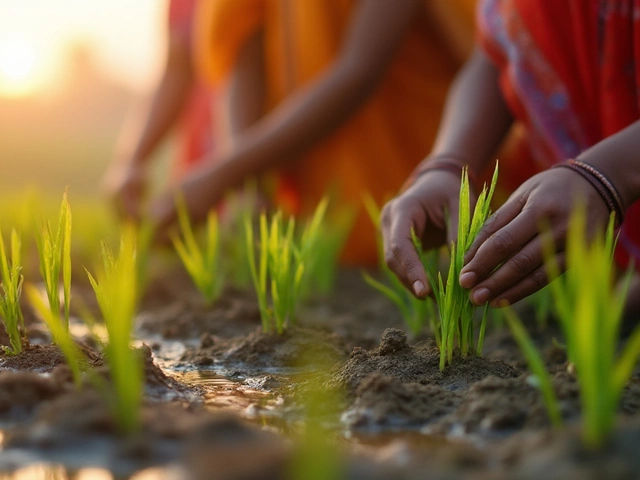Fruit Cultivation Made Simple for Indian Gardens
If you’ve ever dreamed of picking fresh mangoes, guavas or apples from your own backyard, you’re in the right place. Fruit growing doesn’t have to be a mystery. With a few basic steps you can turn a small plot or even a balcony into a productive fruit garden.
Choosing the Right Fruit for Your Climate
India’s climate varies a lot, so the first decision is picking a fruit that loves your weather. In hot, dry regions like Rajasthan, look for drought‑tolerant trees such as ber (Indian jujube) or custard apple. In the humid east, mango, lychee and jamun thrive. If you live in the hill zones of Himachal or Uttarakhand, apples, pears and plums are the obvious choices.
Don’t forget about chill hours – the number of cold nights a tree needs to set fruit. Apples need 800‑1,200 chill hours, while mangoes need almost none. Check local agricultural extension pages for a list of chill‑hour requirements and match them to your area.
Practical Steps to Grow Fruit Successfully
1. Soil preparation. Most fruit trees like well‑draining loam. Mix garden waste, compost and a handful of sand to improve texture. Test the pH; a range of 6.0‑7.0 works for most Indian fruit varieties.
2. Planting depth. Dig a hole twice as wide as the root ball but only as deep as the root collar. Too deep will drown the roots, too shallow will expose them.
3. Watering. Young trees need consistent moisture – aim for 2‑3 liters per day during the first three months. Once established, water deeply once a week, especially during dry spells.
4. Mulching. Spread a 5‑cm layer of straw, dry leaves or coconut husk around the base. Mulch keeps weeds down, retains moisture and adds organic matter as it breaks down.
5. Pruning. Trim dead or crossing branches in the dormant season. For mangoes, a single central leader with open canopy works best. For apples, follow the “open center” shape to let light reach all buds.
6. Fertilizing. Use a balanced NPK (10‑10‑10) fertilizer in spring and again after fruit set. Add a pinch of zinc or iron if leaves turn yellow, a common issue in Indian soils.
7. Pest management. Keep an eye out for fruit flies, aphids and mealybugs. Simple traps, neem oil spray, or companion plants like marigold can reduce infestations without chemicals.
8. Harvesting. Pick fruit when it gives a slight give to gentle pressure and has the typical color of its variety. Harvest early in the morning for best flavor.
By following these steps you’ll see steady growth and eventually a steady supply of fresh fruit. Remember, fruit trees are a long‑term investment – they may take 2‑5 years to bear, but the payoff is worth the wait.
Start with one or two varieties, learn as you go, and soon you’ll have a thriving fruit garden that feeds the family and adds green beauty to your home.

Which Fruit Is the King of India? All About Growing the Mango
Everyone calls the mango the king of fruits in India, and for good reason. This article breaks down what makes the mango so special, and how you can grow it in your own home garden. Get tips on choosing the right variety, handling pests, and caring for your tree all year round. Packed with real advice for Indian gardeners, both new and experienced. No fluff, just what you actually need to know about this legendary fruit.
About
Vegetable Gardening
Latest Posts


How Deep to Plant Rice: Best Depths, Mistakes, and Expert Tips
By Alden Thorne Jul 11, 2025

Rice Farming Profitability: What Really Pays Off?
By Alden Thorne May 10, 2025

Which Is the Luckiest Flower in India? Discover Spiritual and Cultural Wonders
By Alden Thorne Aug 2, 2025
